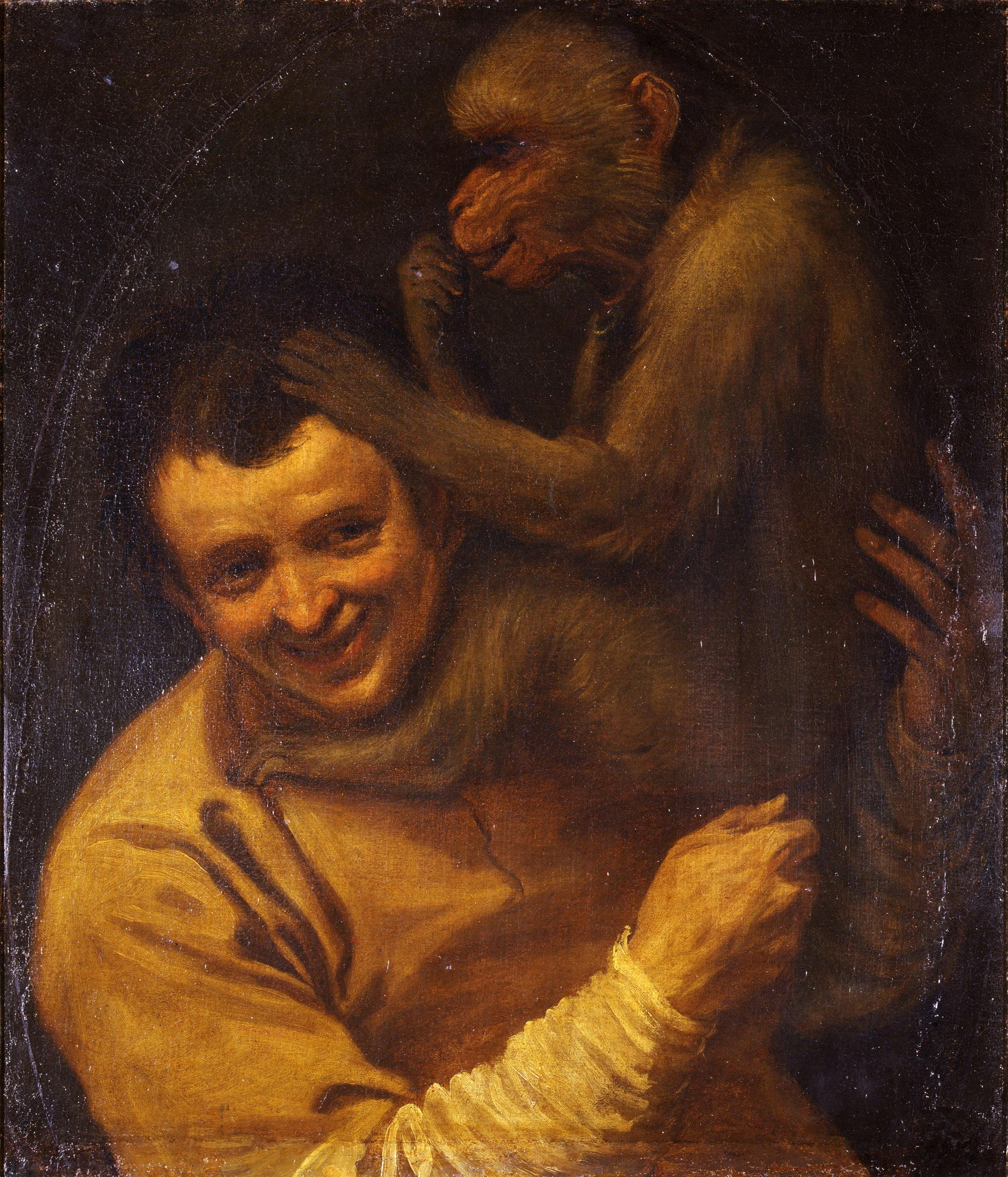Man with a Monkey
Annibale Carracci (Bologna 1560 – Rome 1609)
The naturalism in this painting and the spontaneity with which it portrays the Barbary Ape playing with the hair of an amused young man, is what led some critics to attribute the work to Annibale Carracci, Bolognese painter who, from his early career, stood out for his tendency to represent real-life scenes from the world around him. Some of the works that best represent this style include “The Butcher’s Shop” or “The Bean Eater”. Annibale, together with his brother Agostino, and cousin, Ludovico, made a bold impression on the artistic developments of Bolognese and later, Italian painting, forging a classical and at the same time, naturalist ideal. In 1582, Annibale and Agostino founded the Academy known as the “Accademia degli Incamminati” in Bologna, with the aim of taking painting out of the anguished tones of Mannerism, following the example of the great Masters of the 16th century, and placing the focus on anatomy and life drawing.
According to some critics, the Man with a Monkey may be a work by Titian or Tintoretto, considering the use of colour that reflects the Veneto style and setting. What is not up for debate is the extraordinary quality and inventive freshness of the portrait, showing how a profound shift was taking place towards the end of the 16th century, moving away from a cultured, intellectual form of painting, in the Mannerist style towards a freer approach that was more open to unusual, popular subjects. These are the premises for the birth of Caravaggio’s style of painting and to the spread of genre art that looked more towards a composite vision of everyday reality.
